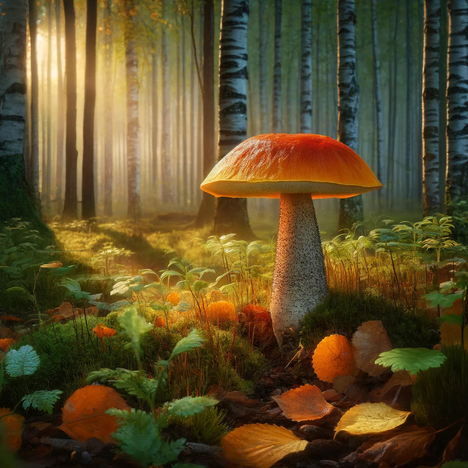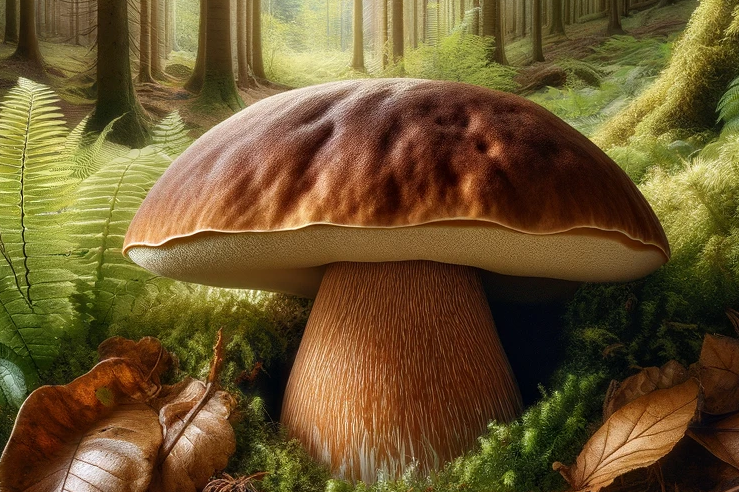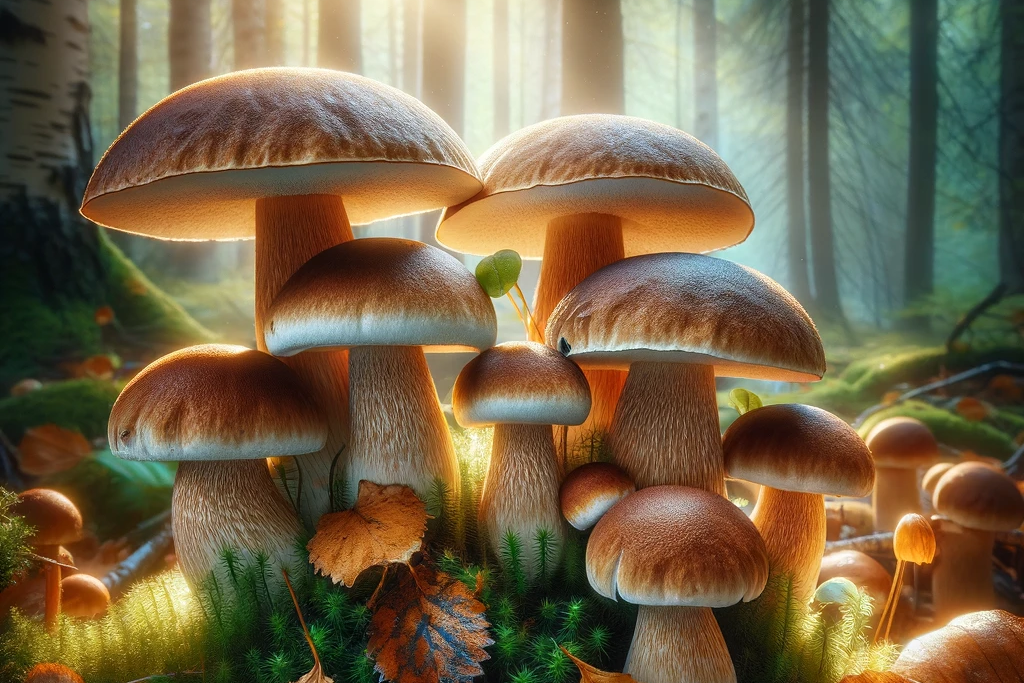Deciduous forest red cap

The world of dog nutrition is more diverse than ever before, and there are always new and exciting ingredients that can support the well-being of our four-legged friends. One such interesting but lesser-known food is the deciduous forest red cap, a mushroom native to deciduous forests. This article looks at what exactly deciduous forest red cap is, examines its potential benefits and drawbacks for your dog's diet and gives you a comprehensive picture of this natural ingredient.
The mysterious world of the deciduous forest red cap
The deciduous forest red cap, botanically known as Leccinum aurantiacum, belongs to the family of the thick-cap relatives and is mainly found in temperate deciduous forests. A characteristic feature of this mushroom is its strikingly colored cap, which can vary from a deep red to a bright orange. Among mycologists and mushroom pickers, the deciduous forest red cap is prized for its nutty flavor and firm texture, but it is a relative unknown in dog nutrition.
Advantages of the deciduous forest red cap in dog nutrition
Natural source of nutrients
Mushrooms are known for their richness in natural nutrients, and the broadleaf red cap is no exception. It is a good source of B-group vitamins, which play a key role in a dog's energy metabolism, as well as minerals such as selenium, which has antioxidant properties.
Digestive benefits
Mushrooms contain certain dietary fibers that can promote intestinal health and help maintain a healthy gut flora. The deciduous forest red cap could therefore support digestion and contribute to your dog's general health.
Antioxidant effect
The deciduous forest red cap contains antioxidants that can protect cells from damage caused by free radicals. This can help prevent chronic disease and promote your dog's overall well-being.
Disadvantages and considerations of broadleaf redcap
Potential toxicity
While the broadleaf red cap is considered safe for human consumption, specific studies on its effect on dogs are lacking. Some species of mushrooms can be toxic to dogs, so caution is advised. It is important to carefully monitor the introduction of this mushroom into your dog's diet and consult a veterinarian at the first sign of intolerance or poisoning.
Availability and identification
Correct identification of the deciduous forest red cap is essential, as confusion with poisonous mushrooms can have serious consequences. In addition, availability is seasonal and may be limited in certain regions, making regular inclusion in the diet difficult.
Allergic reactions
As with any new ingredient, there is a risk of allergic reactions to the deciduous forest red cap. Watch your dog closely when feeding this mushroom for the first time.
A mushroom with potential, but caution is advised
The deciduous forest red cap certainly has potential as an interesting addition to your dog's diet. Its natural nutrients and health-promoting properties can be an enrichment. However, caution is advised due to the potential risks, particularly the risk of confusion with poisonous mushrooms and the possibility of allergic reactions. It is advisable to seek professional advice before introducing this mushroom into your four-legged friend's diet and always pay attention to its origin and quality. With the right precautions, the deciduous forest red cap could be a safe and nutritious addition to enrich the variety in your dog's food bowl.
If you notice any signs of hypersensitivity or poisoning in your dog, you should see your vet immediately. We are not a substitute for a vet, but we try to be as accurate as possible. Every dog reacts differently and we recommend you get a second opinion or consult your vet if in doubt.
Stay healthy and take good care of your four-legged friend!😊
Similar to Deciduous forest red cap
The chestnut bolete (Boletus badius), also known as the chestnut mushroom, belongs to the boletus family and can be found in many forests in Europe and North America. Its characteristic feature is...
The common boletus (Boletus edulis) is a member of the boletus family and is known for its nutty taste and firm texture. It grows in forests in Europe, North America and Asia and is used both fresh...
The common birch fungus, also known as the birch mushroom, is a tree fungus that grows primarily on dying or dead birch trees. This mushroom is easily recognizable by its white to light brown color...
Butter mushrooms belong to the genus of the butter mushrooms and can be found in forests and meadows. They are known for their characteristic, slightly nutty flavor and soft texture, which gives...



